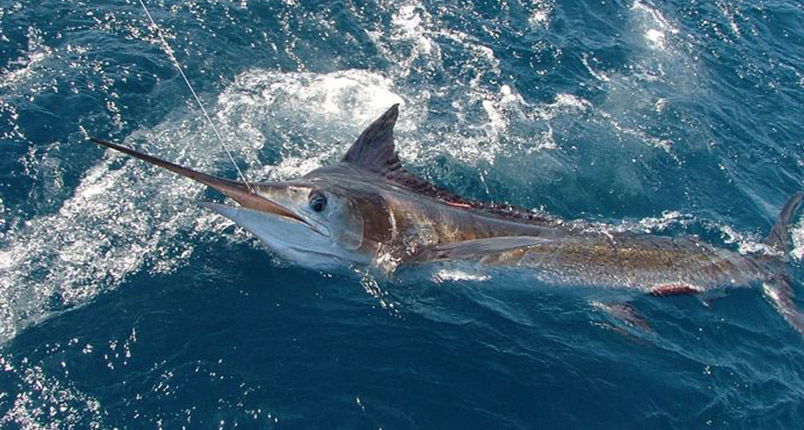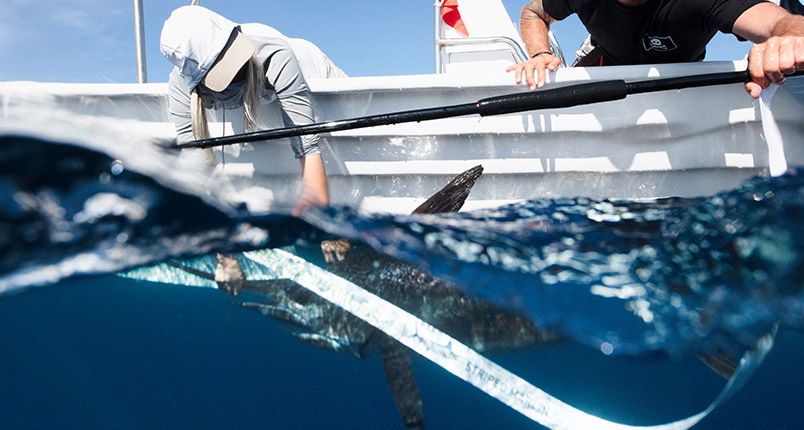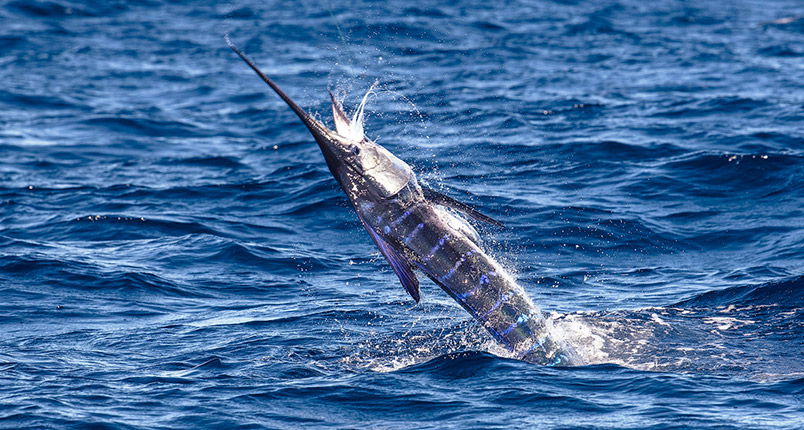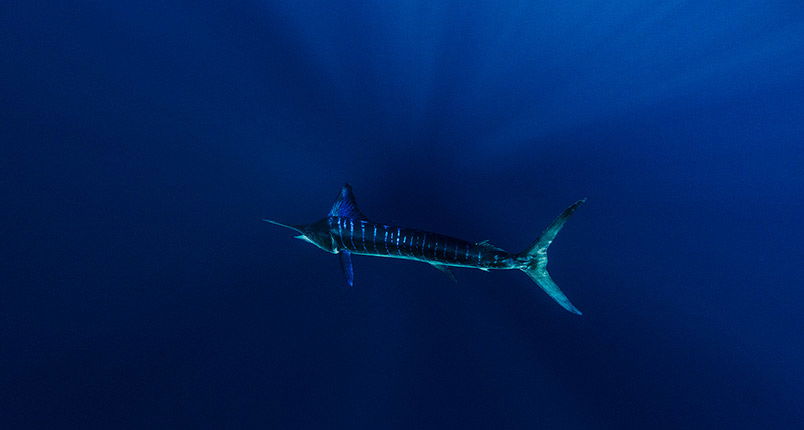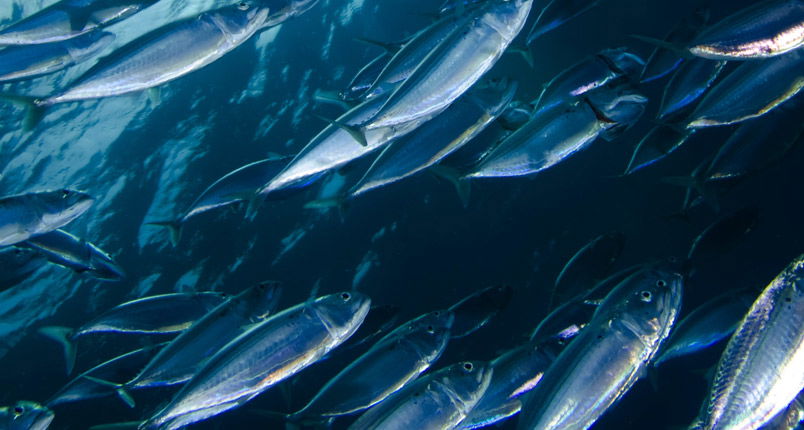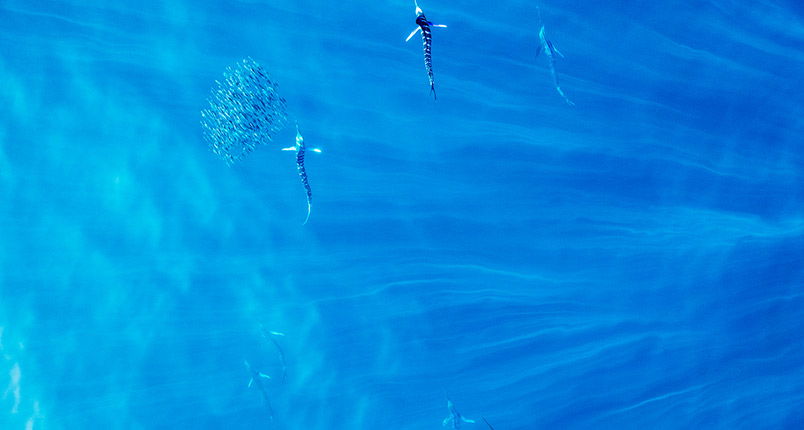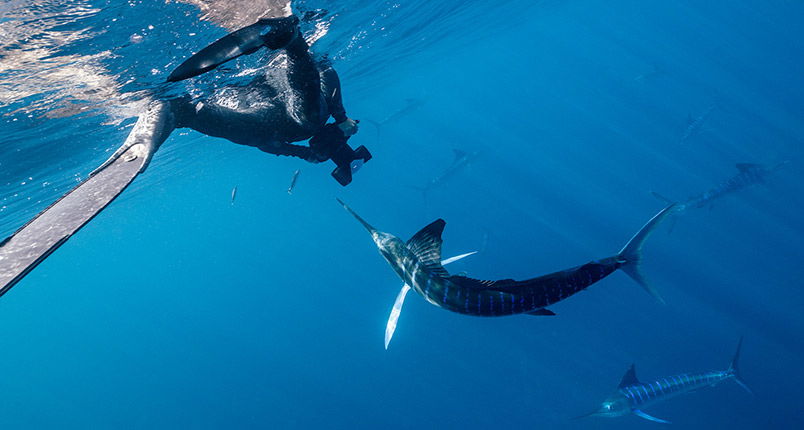Striped marlin prey on small fish species that are surface dwellers. They hunt both during the day and at night, a behavior called cathemerality. During the day they tend to target mackerel, sardines, and other bait fish that swim in dense bait balls. In the evenings and night, they target squid. Like other billfish, they are opportunistic eaters, targeting any species that can fit in their mouth.
